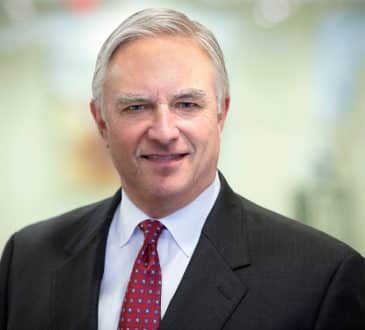Culture in a Pressurised World

Business leaders are today facing pressure from all angles, from hybrid workforces, ongoing disruptions due to resignations, the impact of ‘quiet quitting’, the inability to recruit talent as skills shortages grow, to cost pressures as the globe is crippled by inflation as fears of a global recession grows.
Given this pressurised world, it us understandable that being champions of workplace culture may be far removed from the thoughts of business leaders around the world.
With staff hard to find and the need to hold onto the staff we have as paramount, a quick fix to the issue, such as salary increases is understandable, yet could the answer to holding and recruiting quality staff go beyond salary?
Could the first step be recreating a better culture for the workplace be as simple as connecting our team members to purpose through a focus on individual Employee Value Propositions?
Sounds simple on the surface but in practice it’s clearly more complex.
Catherine Dawson, Ai Group’s Principal Adviser of HR Consulting said in her presentation to a group of HR Professionals recently that:
Employees who are engaged at work:
- Regularly demonstrate discretionary effort.
- Have higher levels of productivity and make fewer mistakes.
- Have lower levels of absenteeism and on-the-job time wastage.
- Contribute to a reduction in costly employee turnover.
- Provide higher levels of customer service.
- Deliver more innovation and collaboration.
- Enjoy stronger diversity and inclusion.
- Suffer fewer workplace issues such as bullying and harassment.
What she is telling us is that emotional connection matters and directly relates to the effort your people put in to their work, impacting loyalty and their level of commitment to achieving the organisation’s goals.
Disengagement on the other hand will only contribute further to a loss of talent and skills shortages placing pressure on the organisation’s ability to achieve its goals.
When a business goes to market leading with an attractive salary offer, what can occur is that we fail to consider the impact on culture and motivation as our existing workforce is invited to train and onboard the ‘high priced’ recruit.
So, what’s the big deal – you had a talent gap, so you solved it?
Now think, how engaging is it for our existing talent who is forfeiting their own time normally spent doing their roles, instead onboarding and skilling up a new recruit who is often less experienced, less credentialled, younger….only to find out they’re getting paid more.
What message does it send about values – yours and the organisations?
It’s an oversight on our part at best. We’re not paying what the market would to the talent that has the knowledge and experience we’re more than happy to lean on to pass on to a new starter. Unless we tackle this issue, we’re going to be chasing our tails with further drains on our existing capability base as disgruntled staff walk away, fed up and seeking to claim their own “pay rise” elsewhere.
All this at a time when our teams are more disconnected from each other than ever before, with some in the office all the time, some a few days a week and others working remotely from home 100% of the time.
It is little wonder we are moving from the ‘Great Resignation’, to the ‘quietly quitting’, described in the Harvard Business Review as people who fulfill their primary responsibilities, but they’re less willing to engage in activities known as citizenship behaviours: no more staying late, no more staying late, showing up early, or attending non-mandatory meetings.
Such behaviour is the biggest threat to cultural erosion and while preventing it in the first place is critical, spotting it early and addressing it prevents it from permeating further across the business.
With so much diverting our attention, how then do we as leaders build a strong culture of performance, cohesion and ultimately one that attracts and retains the right talent for us.
In such a world, is it possible to nurture that culture?
The key differentiator that underlies an organisation’s ‘culture performance’ is how to get your employees to demonstrate the culture your organisation needs, which may be more straightforward than you think.
It’s time to ask our people what matters to them and design a way of working in partnership that facilitates mutual value (both to them and the organisation) by asking yourself:
- How often and how creatively am I bringing my team together for the purpose of enabling inter-functional and inter-team relationship development?
- Am I clear on the expectations of how work is performed and why that matters to multiple stakeholders and not just what needs to be completed?
- How well am I removing reasons for underperformance by providing training, development and building capability – am I communicating that value to my employees?
- Am I aligning the roles of my employees within the organisation to their personal purpose?
- How frequently do I measure engagement levels and proactively address areas of concern?
- How much time do I spend on my own relationships with my team to understand how they measure value and what drives their engagement?
Culture is about the establishment and reinforcement of social and workplace norms. In today’s pressurised world the challenge of getting our teams together to reconnect to both an individual and team purpose has never been more important.
Written by Ingrid Maynard.
Have you read?
Best CEOs In The World, 2022.
Global Passport Ranking, 2022.
World’s Richest People (Top Billionaires, 2022).
Economy Rankings: Largest countries by GDP, 2022.
Top Citizenship and Residency by Investment Programs, 2022.
Add CEOWORLD magazine to your Google News feed.
Follow CEOWORLD magazine headlines on: Google News, LinkedIn, Twitter, and Facebook.
This report/news/ranking/statistics has been prepared only for general guidance on matters of interest and does not constitute professional advice. You should not act upon the information contained in this publication without obtaining specific professional advice. No representation or warranty (express or implied) is given as to the accuracy or completeness of the information contained in this publication, and, to the extent permitted by law, CEOWORLD magazine does not accept or assume any liability, responsibility or duty of care for any consequences of you or anyone else acting, or refraining to act, in reliance on the information contained in this publication or for any decision based on it.
Copyright 2024 The CEOWORLD magazine. All rights reserved. This material (and any extract from it) must not be copied, redistributed or placed on any website, without CEOWORLD magazine' prior written consent. For media queries, please contact: info@ceoworld.biz
SUBSCRIBE NEWSLETTER








